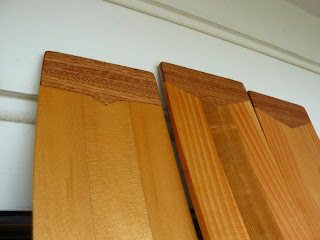In early August, all the planking was complete (7 'planks' per side) and I was at turn-over stage. For those who are wondering, a standard sheet of ply is 1220 x 2440 (4 feet x 8 feet) and so to make them long enough for the 4.7m Port Sorell the sheets are sawn in half, end to end and the
two halves then joined to create lengths of ply that are 600mm x 4880mm. (See the photo of the scarfing process on 7 Sept posting).

Here she is, sitting on the trailer that I'm hoping will end up being used for transport. At the moment its just a convenient location for the next stage of work. Trailers are wickedly expensive, so I bought this one cheap as a 'do up' and have welded various extensions onto it to make it big enough - unfortunately it is still too weak, flexing in the middle around the central axle and so will need more surgery later - for now its on with the bit that really interests me - the boat!

Here's a couple of photos of the inside - obviously still showing the frames and stringers which will have to be removed next. Before that happens I aim to glue on the outer gunwales to give some more strength to the sides and get the breast hook and quarter knees cut to size.
This photo shows the detail of the transom knee - the staining around the transom is water stains from my having to soak the hog in order to bend it over the last 500mm to get the shape to fit properly. I've managed to get most of the staining out by soaking the entire transom in water - hoping the rest will sand out eventually...




























